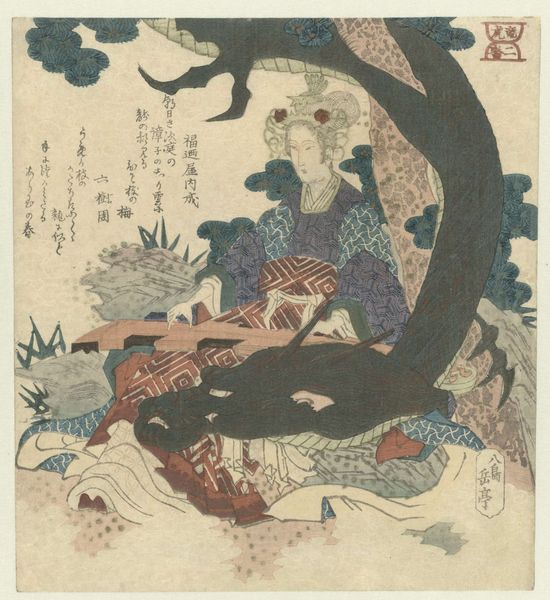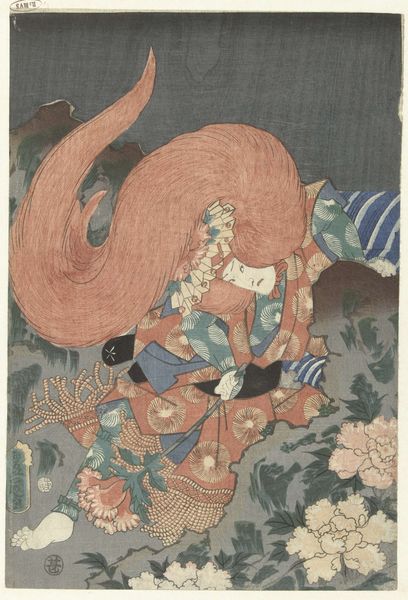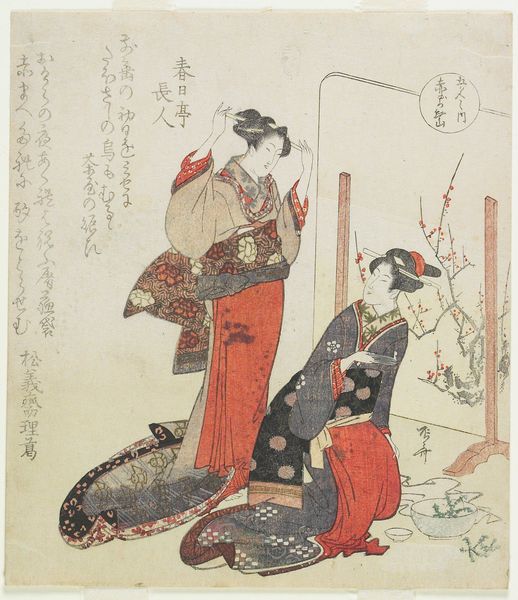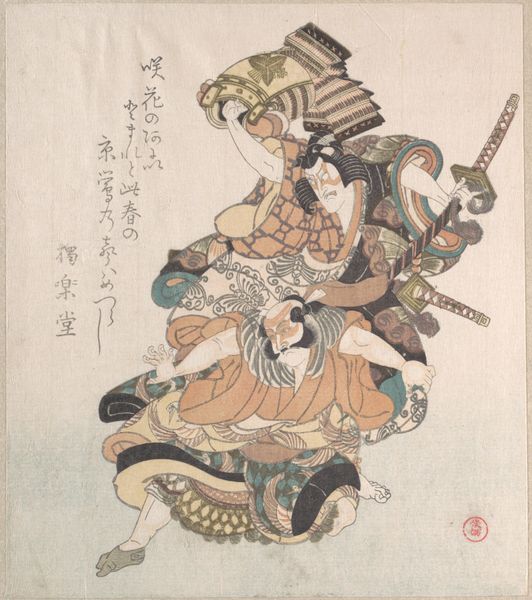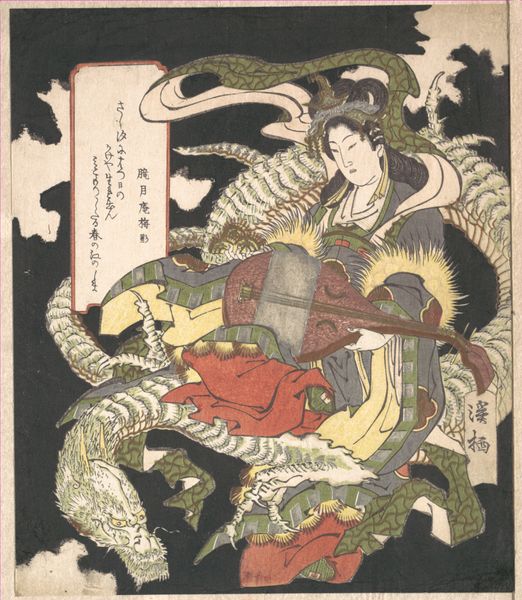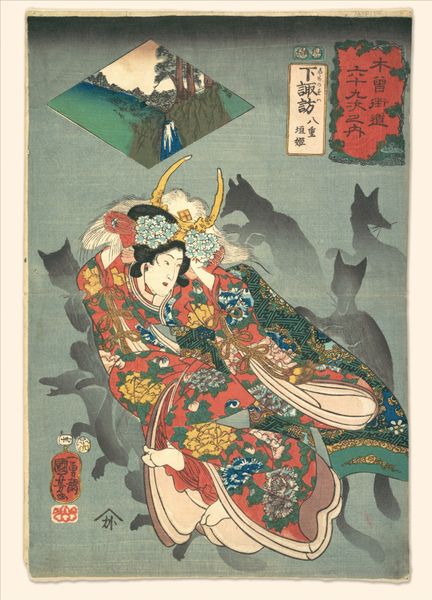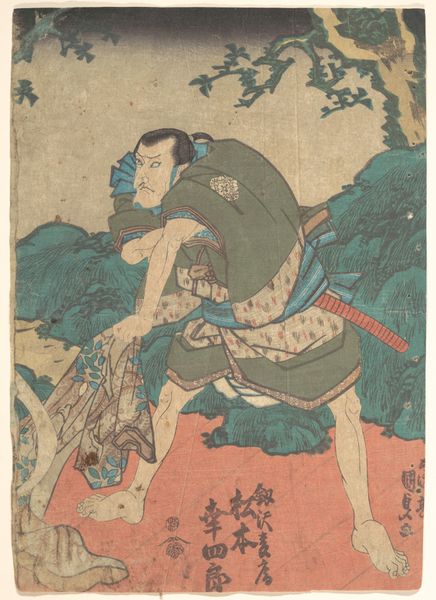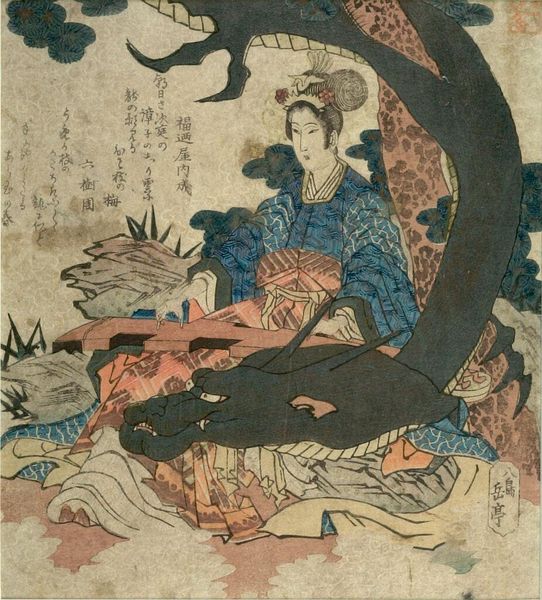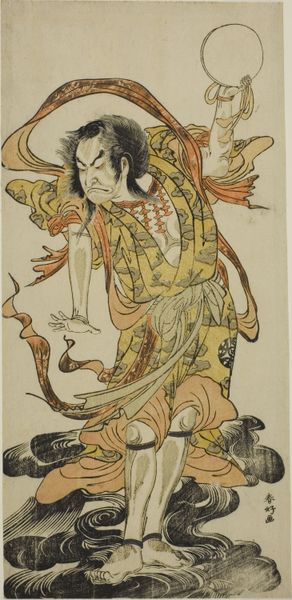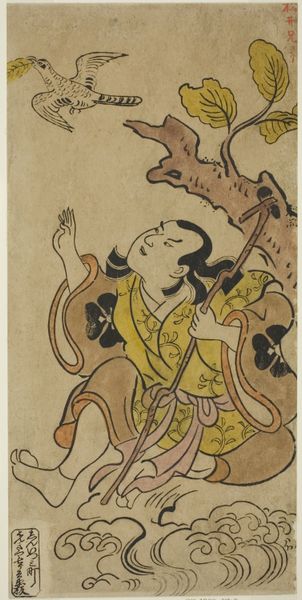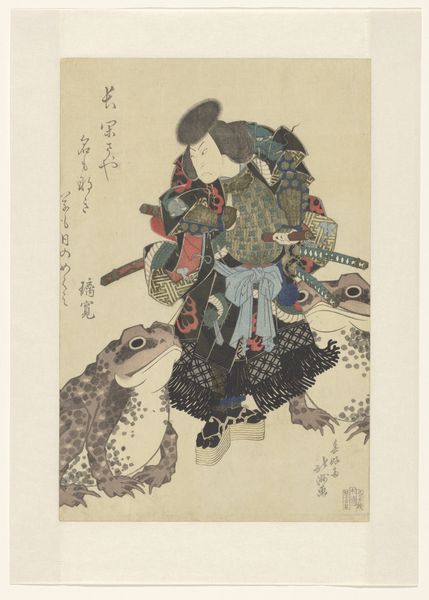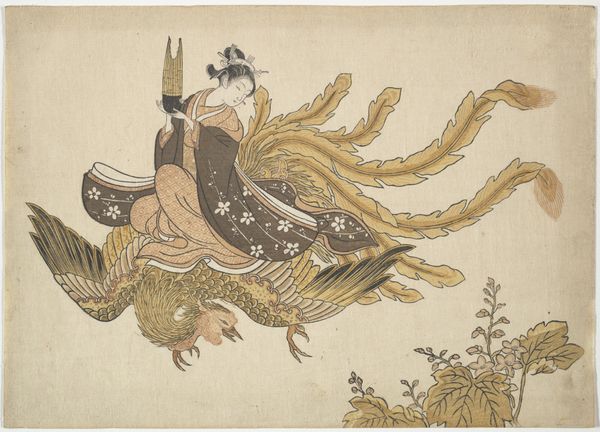
print, watercolor, ink
#
portrait
#
water colours
#
ink painting
# print
#
asian-art
#
ukiyo-e
#
japan
#
figuration
#
watercolor
#
ink
#
orientalism
#
musical-instrument
Dimensions: 8 11/16 x 7 1/2 in. (22.1 x 19.1 cm)
Copyright: Public Domain
Curator: Here we have Yashima Gakutei's "Benzaiten ni Ryu," dating from the late 18th to mid-19th century. The artwork, rendered as a print, presents us with Benzaiten, a Buddhist goddess. Editor: My first impression is one of tranquility, almost melancholy. The colors are muted, lending the piece a quiet, reflective atmosphere. I’m immediately drawn to the intricate patterns of her kimono juxtaposed with the more fluid, organic lines of the dragon. Curator: It's an intriguing piece when you consider the role of ukiyo-e prints during that time, functioning as both accessible art and vehicles for cultural messaging. Notice how Gakutei uses the figure of Benzaiten, typically associated with music, eloquence, and wealth, and subtly situates her within a scene suggestive of nature. It blurs those social constructs. Editor: Absolutely. And seeing Benzaiten paired with the dragon makes one think about power, wisdom, and perhaps the taming of chaotic forces. How the visual narrative touches on themes of female agency and strength in a complex social system. Curator: Examining the history of Benzaiten’s representation is enlightening; in Japanese Buddhism, she is not merely a deity but a figure whose image and veneration intertwine with social mobility and the hopes for economic betterment. Gakutei, here, appears to be continuing the cultural and historical arc of the goddess. Editor: And yet, there's a tension present, isn't there? The softness of the watercolor, the intimate scale of the print—all this almost domesticates a figure of such potent symbolism. The dragon seems less fearsome, more like a docile pet at her feet, questioning the power dynamic. What does it reveal of women in similar societal positions? Curator: An important observation. The circulation of these prints contributed to a democratization of religious and cultural iconography, reshaping the narrative power and, at times, diluting those visual symbols' authority. The role of artist in all of this should not be dismissed either; Gakutei reshapes tradition and societal values, intentionally or not. Editor: I think grappling with the potential implications of artistic freedom and re-appropriation are key. We are not merely passively appreciating art but considering how this image may act within structures of power that both liberate and constrict, culturally and socially. Curator: Reflecting on our conversation, it strikes me how this seemingly straightforward print unveils such rich layers of historical context and sociocultural complexity, reaffirming art’s unique capability as a visual touchstone through shifting times. Editor: Indeed, an image initially so still holds such potential for vigorous discourse about women, society, and our place within it. It urges a crucial look into intersectionality across culture, identity and tradition.
Comments
No comments
Be the first to comment and join the conversation on the ultimate creative platform.
